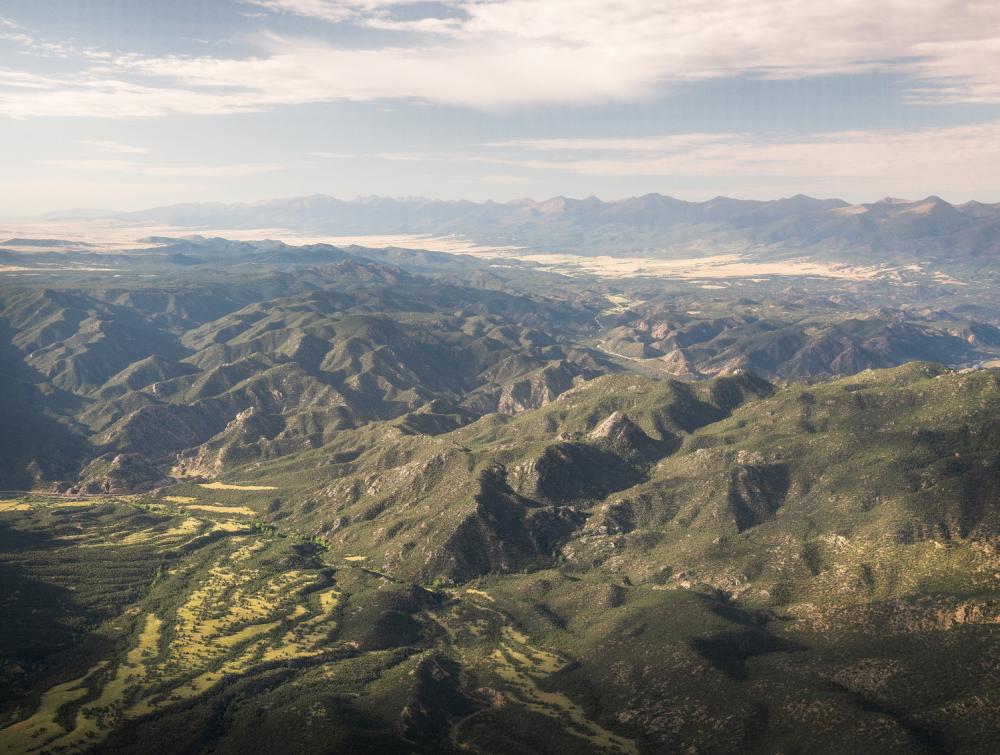Bureau of Land Management plan protects public lands in Central Colorado

Public lands in central Colorado managed by the Royal Gorge Field Office of the BLM
Mason Cummings, TWS
BLM plan protects public lands in central Colorado but misses mark on emissions reduction
Record of Decision benefits local communities, safeguards Colorado’s public lands and waters, and boosts outdoor recreation opportunities
The Bureau of Land Management (BLM) Royal Gorge Field Office (RGFO) released the Record of Decision (ROD) for the Eastern Colorado Resource Management Plan (ECRMP), which encompasses 658,200 acres of public lands in central Colorado, mostly along the Arkansas River between Salida and Cañon City. Local community leaders, hunters and anglers and conservationists praised the final plan for significantly increasing protections for about 300,000 acres of public lands.
The plan will guide the use and management of these lands for decades to come, benefiting local communities, wildlife, and the state. It will also guide the management of wildlife, water, cultural resources, recreation areas, conservation areas, oil and gas development, road building, and livestock. Yet, the final plan is a missed opportunity for reducing climate emissions by leaving much of the planning area open to future oil and gas leasing, which BLM estimates will actually increase emissions.
Since the planning process began in 2015, the BLM worked to align this plan with local values and the state of Colorado’s goals. Thousands of public comments were submitted through this process, highlighting the need for conservation and recreation designations in the plan.
The final plan significantly expands conservation protections for about 300,000 acres:
- 114,700 acres as lands with wilderness characteristics (LWC);
- 101,400 acres as Areas of Critical Environmental Concern (ACECs);
- 87,400 acres as Backcountry Conservation Areas;
- Five river and stream segments, totalling 60 BLM river miles, were found suitable for inclusion in the National Wild and Scenic Rivers System, consisting of four segments of the Arkansas River along with Eightmile Creek; and
- Strengthen recreation management using two management prescriptions: Special and Extensive Recreation Management Areas which includes 10 areas totaling 71,400 acres.
These BLM public lands are important for outdoor recreation such as hiking, mountain biking, camping, fishing, and hunting. They provide wildlife habitat for big game and other species, and support healthy ecosystems that can help species persist in a changing climate.
“CWF has focused on South Park for many years, well before the formal planning process began in 2015. Our coalition throughout the process has consisted of Park County, several conservation organizations, water providers and others. I think that the work we all did well before the formal process made a big different to enable the really good outcome for the unique resources of the South Park area,” said Suzanne O’Neill, executive director of the Colorado Wildlife Federation. “We applaud BLM 's recognition throughout the process of this iconic basin’s distinctive largely unfragmented wildlife habitats, prized trout streams, water quality, and spectacular vistas. In addition, the plan’s treatment of the areas managed by BLM in eastern Colorado outside of South Park has been much improved."
These public lands are also an important economic asset that attracts people. Local businesses thrive and survive off of visitors that seek out these natural values and recreation opportunities. An economic study conducted by ECONorthwest in 2015 found that there were more than 1,230,000 visits to areas within the ECRMP planning area for non-motorized recreation which resulted in $54.3 million in spending to the local economy. This ultimately supported 693 jobs and generated $40.1 million in personal income.
“It's important to protect the area's natural resources in part because they are a significant economic driver for rural economies,” said Nate Porter, owner of Salida Mountain Sports. “Colorado's iconic waterways and landscapes draw people from all over the world. They spend quite a bit of money at local businesses - from restaurants to hotels to retail shops, art galleries, you name it. People coming to recreate in this area have a bonafide economic impact and economic benefit to the area.”
Despite these gains for land protection, the plan misses the mark on reducing greenhouse gas emissions from public lands and improving air quality for communities impacted by oil and gas development. The plan leaves the vast majority of BLM public lands open to future oil and gas leasing at a time when the impacts of climate change, like hotter and more frequent heat waves and more severe storms, are dominating headlines on a daily basis, and while the state of Colorado and Front Range communities grapple with efforts to improve significantly out-of-compliance ozone pollution.
"This final plan marks a huge step of progress toward ensuring a sustainable future for the iconic Colorado wildlands people from around the country know and love," said Jim Ramey, Colorado State Director for The Wilderness Society. "While we celebrate the new lands protections, it's confounding that the final plan will increase climate damaging emissions. Climate pollution from public lands and waters equals nearly a quarter of our nation's annual emissions. The agency must find a way to make our public lands part of the climate solution by reducing emissions from its fossil fuel programs."
“The low-elevation canyonlands and grasslands managed by BLM in Eastern Colorado are important both as wildlife habitat and critical links in the mountains-to-plains ecology of the region. Protection of these areas needs to be given the priority that is necessary in order to protect habitat and wildlife corridors,” said Jim Lockhart, President of Wild Connections.
A coalition of concerned organizations including Wild Connections, Audubon Rockies, and Rocky Mountain Wild, small business owners, outdoor recreationists, and community leaders have been working for years to ensure that this plan safeguards BLM-managed public lands in the Arkansas River valley for future generations by making sure that Colorado’s unrivaled public lands and waters are properly managed and protected, and have strong science-based climate policies.
###
For more information, contact Tony Iallonardo at tony_iallonardo@tws.org.
